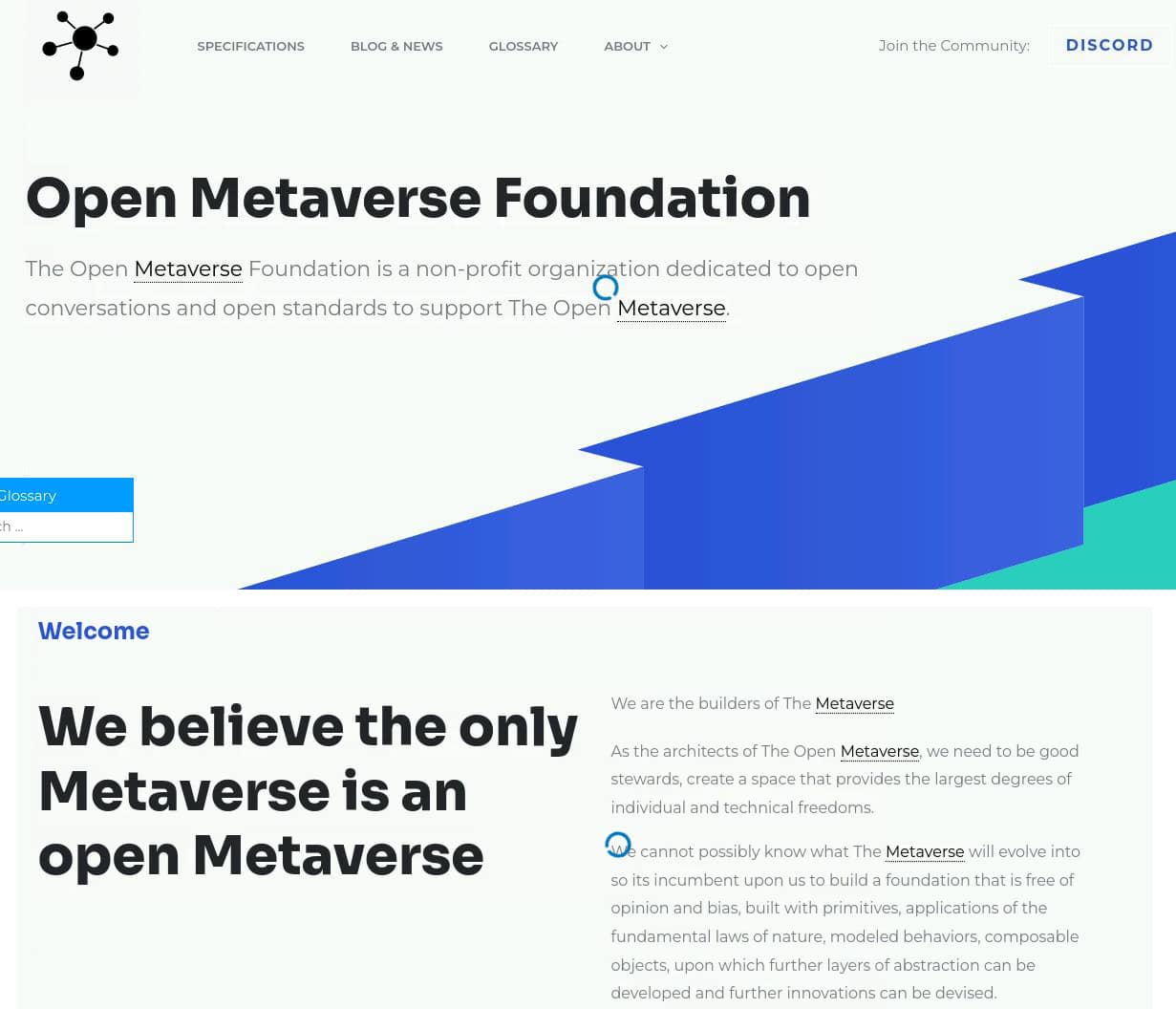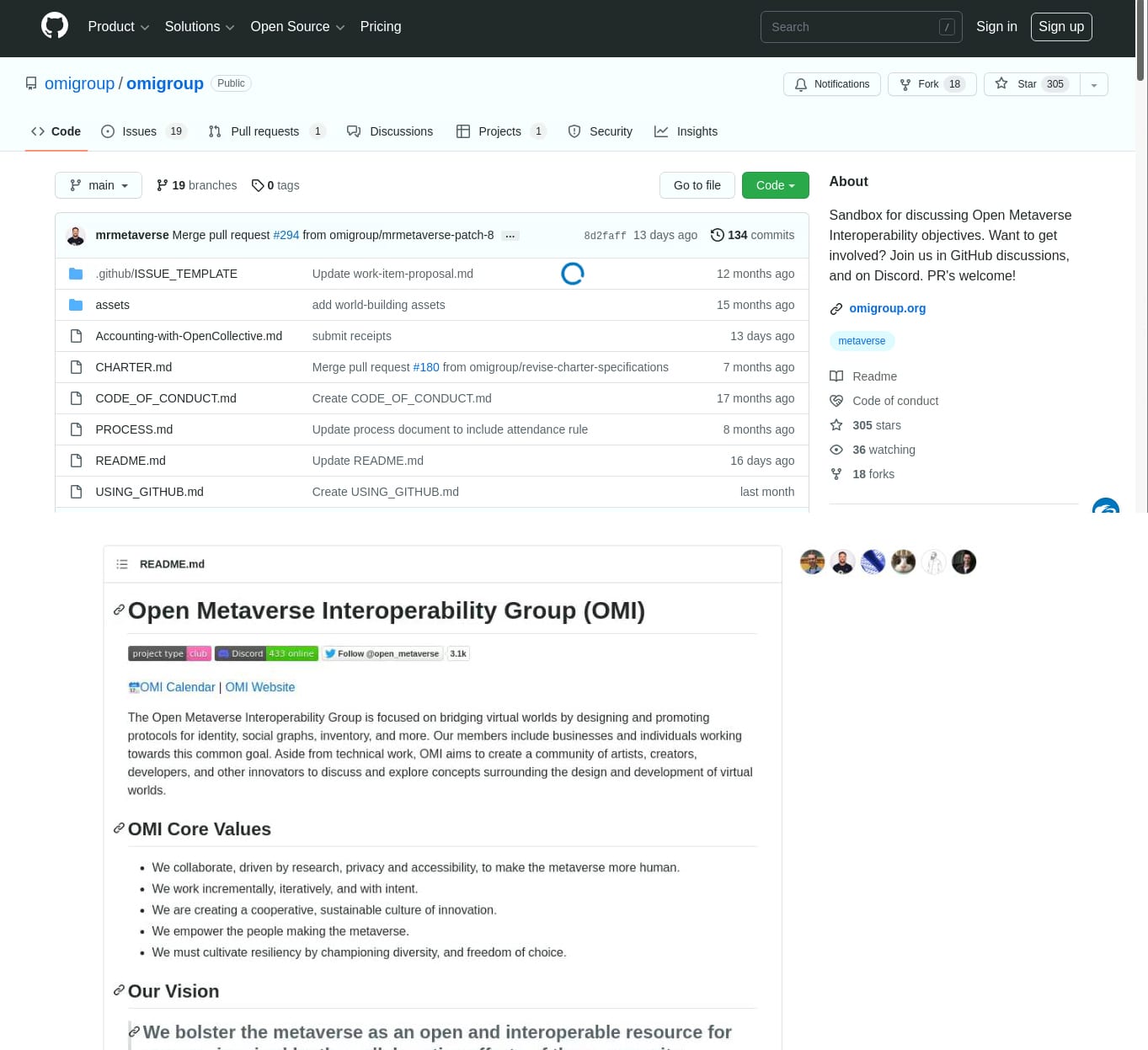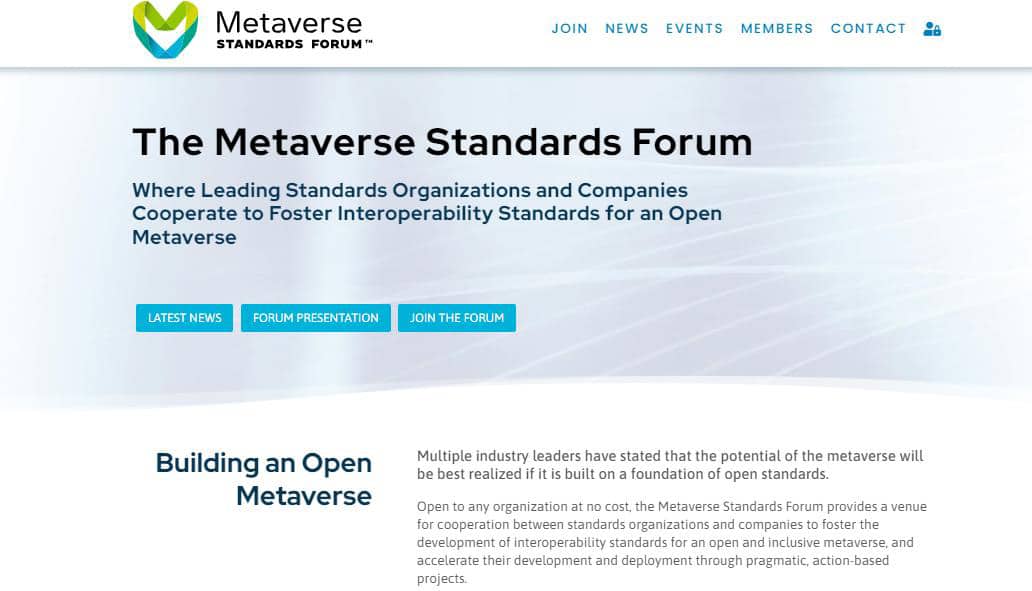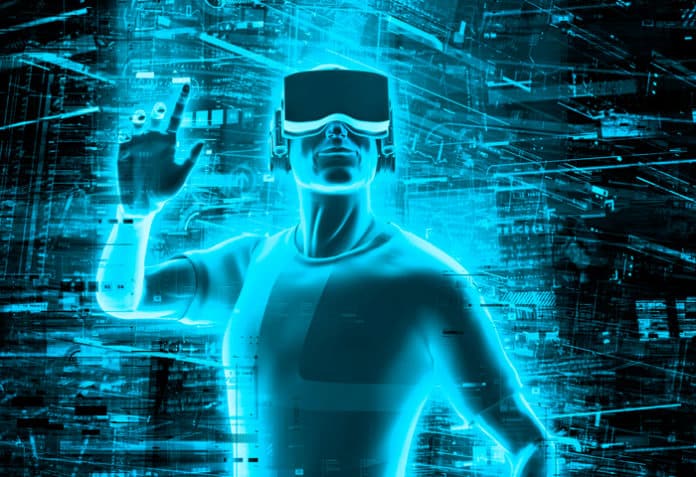This article looks at the relationship between the metaverse and open source. It outlines a few key areas where open source is playing a pivotal role in realising the full potential of the metaverse. It also explores the opportunity that this iteration of the internet and associated virtual spaces presents to reinvent open source.
The metaverse is loosely defined as “a combination of the virtual reality and mixed reality worlds accessed through a browser or a headset, which allows people to have real time interactions and experiences across distance.” It is generating a lot of attention now, as it matures beyond its previous predominant realm of gaming into its much broader field of application as a place not only to play, but also to socialise and work.
Both ‘metaverse’ and ‘open source’ are catch-all phrases in their relative fields, covering everything from technology and communities, to markets, methodologies, and more.
A considerable number of components of the metaverse are being developed as open source projects, according to open source principles — for example, self-sovereign identity (SSI) and smart contracts, both of which are built on blockchain technology.
Interoperability and connectedness
One of the reasons the internet has been so lucrative and transformative is because of how it was created. Throughout the 1960s to 1990s, the foundation of today’s internet was built through a variety of consortiums and informal working groups composed of government research labs, public universities, and independent technologists. These usually not-for-profit collectives typically focused on establishing open standards that would help them share information from one server to another (i.e., messages or files), and in doing so make it easier to collaborate on future technologies, projects, and ideas.
Many believe that the definition and success of a metaverse requires it to be a heavily decentralised platform built mostly upon community-based standards and protocols like the open web and an ‘open source’ metaverse operating system or platform. However, this does not mean there will not be dominant closed platforms in the metaverse.
Interoperability and connectedness are believed to be two of the top core attributes of the metaverse. Interoperability, as per TechTarget, is the ability of different systems, devices, applications, or products to connect and communicate in a coordinated way, without effort from the end user.

In the metaverse, interoperability is the ability for different virtual worlds and platforms to interact with each other. It means that users on one platform can communicate and interact with users on another platform, as well as share data and content. If we have a lot of virtual worlds where you cannot go from one to the next or they are incompatible with each other, that is not going to be a pleasant experience. So, the very nature of a connected system requires that there be openness.
When operators build their metaverse, one can anticipate a constant battle across the technology stack between centralised and proprietary versus decentralised and open standards and protocols. It will benefit users if the metaverse builders collaborate on interoperable, open standards on privacy, security, blockchain, data storage, AI (artificial intelligence), spatial computing, and so on.
For an open, interoperable metaverse to see its potential, it is vital for consortiums of different enterprises, both centralised and decentralised, to collaborate on protocol standards. Much as the internet’s globally accepted standards of DNS (domain name system) and IP (internet protocol) catalysed its adoption, the metaverse requires standards for graphical, transactional, compute, and network capabilities.
Metaverse open standards
In the initial stages of development, there are already some projects working on creating an interoperable metaverse. One of them is the Open Metaverse Foundation, which is creating an open source platform that allows different virtual worlds to interoperate with each other.
There are some efforts to create standards for the metaverse, but these are in their infancy. W3C, the consortium that standardised web navigation, created the Open Metaverse Interoperability (OMI) Group in April 2021, which is focused on bridging virtual worlds by designing and promoting protocols for identity, social graphs, inventory, and more.
Another such initiative is the Metaverse Standards Forum launched recently by the big tech companies of the world, namely, Meta, MSFT, Epic, and 33 others.
The forum will explore where the lack of interoperability is holding back metaverse deployment and how the work of Standards Developing Organisations (SDOs) defining and evolving needed standards may be coordinated and accelerated. The forum will not create standards per se. Instead, it will take on a more top-level, one might say ‘meta’, role by coordinating requirements and resources to foster the creation and evolution of standards for metaverse within standards organisations working in relevant domains.
Metaverse technologies and open source metaverse applications have predominantly been focused within the gaming space. However, as the concept, technologies and supporting infrastructure advance in concert with a general increase in public consciousness of the metaverse, we are seeing a rapid increase of metaverse based services and applications. This includes applications for business, where there are numerous opportunities to rethink user interaction, distribution, and revenue channels, as well as how (and where) work is orchestrated and conducted.
There are several neighbouring yet distinct technologies that will need to be integrated and adopted into the metaverse for this to be fully realised. Amongst the most important of these are blockchain technologies, cloud infrastructure, Internet of Things (IoT), artificial intelligence, machine learning, robotics, and connectivity-based infrastructure such as satellite internet constellations and 5G/6G — all built on or predominantly open source.
Blockchain technology will play an extremely vital role in surmounting these challenges and, consequently, many of the associated projects and communities of practice are open source. A prime example of this surrounds the projects focused on self-sovereign identity (SSI), which is an approach that gives individuals control of their digital identities and addresses the difficulty of establishing trust in an interaction. Given the transient and virtual/remote nature of human interaction in the metaverse, this question of identity, ownership and trust is at the heart of whether the metaverse is a safe, inclusive, and mutually beneficial place to work, socialise and play, or the very opposite.
The metaverse is increasingly becoming a viable place to work and to sell products and services, and where organisations should focus their attention, effort, and resources. The metaverse market is still at the foot of its growth curve and the associated technologies are still in the formative stages. As such, some of the key building blocks are still works in progress.
Much of this work is being conducted in open source communities and projects, and represents a fabulous opportunity for open source oriented organisations to ‘get in on the ground floor’ and cement their position as thought leaders and pioneers in this exciting and emerging technology.

Metaverse components and open source
Now let us consider some of the key components that will facilitate the ability and scalability of working in the metaverse.
Identity: The metaverse and its future are intrinsically linked to web3, billed as the next iteration of the World Wide Web. It is based on blockchain technology, which incorporates concepts such as decentralisation and token-based economics. The key term here is ‘decentralised’, i.e., not managed or controlled by a centralised body, or company.
In the present iteration, web2, the market and our data (including our digital identity) is monopolised and monetised by a handful of huge technology companies such as Meta (previously Facebook), Google, Microsoft, etc.
A key tenet of web3 is to liberate, or democratise and decentralise our personal data, including our digital identity. There will, at least in a first phase, not be one single, vast metaverse, but thousands of metaverses.
In the future, some predict that, as there is one internet, there will be one metaverse, interconnecting multiple sub-metaverses in one coherent, standards based, experience. Some metaverses will be private, some will be public, and many will be a combination of the two. This will lead to a highly transient experience, both as consumers and increasingly as workers. And, therefore, SSI is such an exciting and important facilitation component for the metaverse.
SSI will handle standard authentication requirements, but so much besides. It has the potential to support the concept of ‘living resumes’, which will accurately and exhaustively capture your work, education, and deliverable history. Background verification checks would be made near instantaneous, as all this information could be kept up-to-date and validated through SSI.
Another potential application is pensions, pension contributions and employment benefits, something that will prove increasingly difficult to track as employment tenures continue to shorten.
There is an incredibly significant level of contribution being made by the open source community to SSI. Notable examples are:
- The European Self Sovereign Identity Framework Lab (eSSIF-Lab)
- Hyperledger Foundation (under the Linux Foundation)
- Trust Over IP Foundation (under the Linux Foundation)
- IDUnion Sovrin Foundation
- World Wide Web Consortium (W3C)
- Decentralised Identity Foundation (DIF)
- Network of Networks
Smart contracts: Another fundamental application of blockchain technologies that will be a critical component of the metaverse is smart contracts.
There are numerous potential applications of smart contracts that will help resolve usual challenges and areas of contractual inefficiency — for example, statements of work and payment of workers. Another potentially interesting application is in the eRFx procurement technology market. In procurement technology, eRFx is an acronym for Electronic Request For [x], where x can be Proposal (RFP), Quotation (RFQ), Information (RFI) or Tender (RFT). A huge amount of investment in the typical enterprise is communicated and tendered through this procurement process. By leveraging smart contracts and linking this to the new talent delivery model we can significantly streamline the entire process.
As an application, the smart contract lends itself much more readily to the ‘matching’ process. It also provides invaluable information to ‘shift-left’ the visibility of demand skills to the talent community and vendors alike. Fulfilment and payment milestones could be automated because of smart contracts, to name just a few benefits.
Another entity associated with smart contracts is a decentralised autonomous organisation (DAO). A DAO is effectively a group of people who agree to abide by certain rules for a common purpose. Those rules are written into the code of the organisation via smart contracts on the blockchain (algorithms that run when certain criteria are met). Open source projects and their communities require a similar level of coordination and governance.
Given that the next iteration of the internet, web3, is built upon blockchain and is intrinsically linked to the metaverse, there is a potential opportunity to rethink where code is developed and versioned, as well as how to foster collaboration, provide training, and support communities of practice in the open source community. DAOs could be a vehicle to provide the governance layer for that vision.

Digital twins
For the metaverse to become a genuine place for work, it will be necessary to replicate assets (‘assets’ being anything from a container through to an entire operating system and everything in between). According to Accenture’s Technology Trends 2022 report, the global digital twin market was valued at US$ 3.21 billion in 2020 and is expected to grow to US$ 184.5 billion by 2030. IBM breaks digital twins into four categories:
- Component/Parts twins
- Asset twins
- System/Unit twins
- Process twins
Microsoft is the frontrunner in this exciting space with its Azure Digital Twins offering, but there are clear opportunities for the open source community to investigate the observability aspect of digital twin technologies.
| Open source projects in the smart contracts space |
| • Hyperledger Foundation (under the Linux Foundation) • Accord Project • Chainlink • Waceo |
Listed above are some of the critical components for the metaverse and its growth trajectory that open source is already involved in. There are clearly opportunities for open source oriented organisations to both engage with these open source projects and foundations. That engagement could take the form of thought leadership, evangelism, and training, as well as technical contributions to address some of the persisting challenges surrounding the metaverse such as privacy and security concerns.
However, there is a bigger opportunity that presents itself here. Namely, what could open source software development and communities look like in web3 and the metaverse? The modern technologies and approaches involved offer a unique opportunity to redesign it, to usher in an evolutionary step forward for open source.












































































